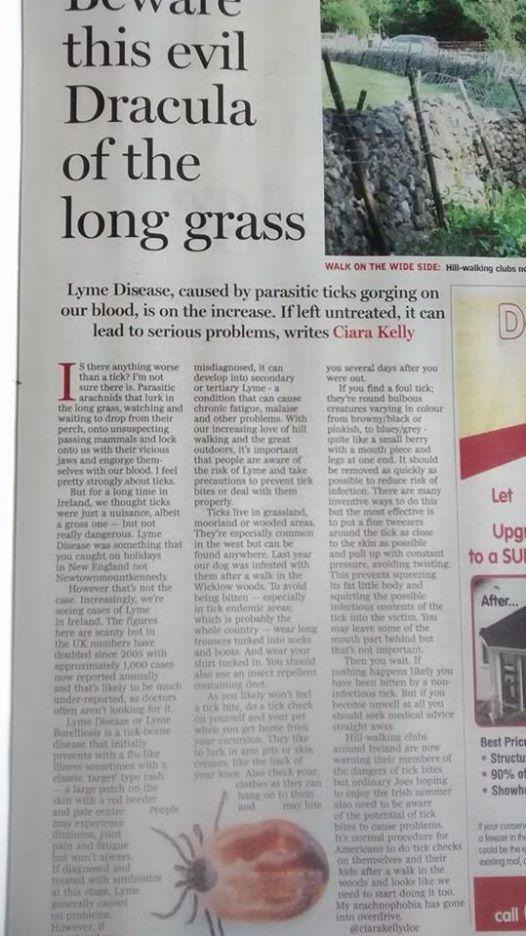Joanne Drayson 's clever comment - Thank you for this article raising awareness of Lyme disease and other infections caused by the bite of a tick. Sadly it is not just the general public but the medical profession who are not very knowledgeable about Lyme disease.
There are many like myself who showed a clear bulls eye rash surrounding a bite to our doctors and complaining of ill health but doctors do not always recognise this classic symptom - it is often dismissed as ringworm or cellulitis but both those conditions are very different.
Of course not everyone gets that classic bulls eye rash and many don't see or recognise the tick that often infects us which is the nymph and is so small about the size of a poppy seed.
However that bulls eye rash is diagnostic and should be treated with appropriate antibiotics. Wait and see is not recommended!
Once that early window of opportunity is missed the disease and it's treatment can become complex - Public Health England guidance is to be updated - research done by James Lind Alliance found that PHE guidance was based on many uncertainties. That leaves doctors currently following guidance based on misinformation.
The tests are antibody tests and there are many reasons why patients may not produce the antibodies tested for. Porton Down say they are looking for better testing methods and a direct test showing current infection would be good.
For detailed information for clinicians and patients Lyme Disease Action is the best resource - PHE are working with this charity and do direct some enquiries to their website.
Many patients in UK and Ireland after falling ill following a tick bite really struggle to get help and treatment a recent Facebook group Lyme Disease UK Discussion group only set up earlier this year already has over 1000 members, chat line Eurolyme has in excess of 2000 members. It is interesting to here so many familiar experiences, recognising symptom patterns and hearing the success stories as patients source treatments that help them.
Science in the field of Lyme Disease ( Borrelia) is constantly emerging this month saw a newly identified Borrelia Miyamotoi now being found in England - this is not thought to present with the bulls eye rash and current two tier testing would not show a positive. Also just published by Johns Hopkins a study on various antibiotics and their effectiveness of treating Borrelia persister cells - most of the antibiotics generally used for treating Lyme disease are only about 30% effective on persister cells - maybe in time combination therapy such as used in other complex disease will become the norm.
One thing is certain there is a lot more to Lyme Disease than most people realise so avoidance of being bitten and prompt treatment if there is a suspicion of infection is the best we can do for now.

